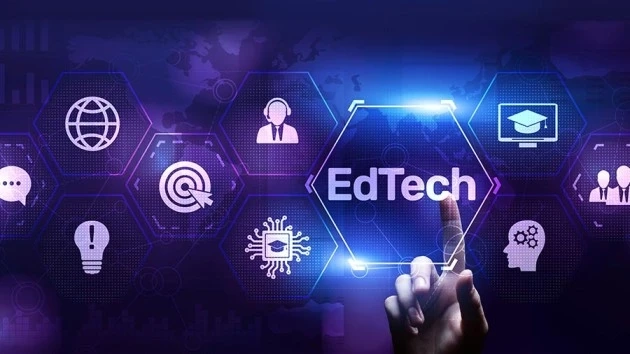The educational technology (EdTech) industry has seen exponential growth and innovation in recent years, transforming how education is delivered and consumed. As technology continues to evolve, so does its application in education, making learning more accessible, engaging, and personalized. Here, we delve into the top trends shaping the EdTech industry and explore how they are revolutionizing education.
1. Personalized Learning
Personalized learning tailors educational experiences to meet the unique needs, skills, and interests of each student. Leveraging data analytics and artificial intelligence (AI), EdTech platforms can now create individualized learning paths. These platforms analyze student performance, learning pace, and preferences to deliver customized content and resources. This approach not only improves student engagement and outcomes but also empowers educators to provide targeted support.
2. Artificial Intelligence and Machine Learning
AI and machine learning are at the forefront of EdTech innovation. These technologies enable the development of intelligent tutoring systems, adaptive learning platforms, and predictive analytics tools. AI-driven chatbots and virtual assistants offer instant support and feedback to students, enhancing their learning experience. Additionally, machine learning algorithms help identify learning gaps and predict student performance, allowing educators to intervene proactively.
3. Gamification and Immersive Learning
Gamification incorporates game elements into educational content to make learning more engaging and interactive. By integrating points, badges, leaderboards, and challenges, gamified learning experiences motivate students to achieve their goals. Immersive learning, through virtual reality (VR) and augmented reality (AR), provides students with hands-on, experiential learning opportunities. These technologies simulate real-world environments, making complex subjects more tangible and easier to understand.
4. Online and Blended Learning
The COVID-19 pandemic accelerated the adoption of online and blended learning models. Online learning platforms offer flexibility and convenience, enabling students to learn at their own pace and from any location. Blended learning combines online digital media with traditional classroom methods, offering a balanced and comprehensive educational experience. This hybrid approach caters to diverse learning styles and needs, ensuring continuity in education regardless of external disruptions.
5. Microlearning
Microlearning breaks down educational content into small, manageable segments, often delivered through videos, quizzes, or interactive modules. This approach aligns with the modern learner's preference for concise, on-demand information. Microlearning is particularly effective for professional development and corporate training, where time constraints and the need for continuous learning are prevalent.
6. Collaborative Learning
Collaborative learning emphasizes interaction and cooperation among students, fostering a sense of community and enhancing social skills. EdTech platforms facilitate collaborative learning through features like discussion forums, group projects, and peer reviews. These tools enable students to work together, share knowledge, and provide feedback, enriching the learning experience.
7. Blockchain Technology
Blockchain technology is emerging as a transformative force in EdTech, particularly in credentialing and verification. Blockchain ensures the security, transparency, and immutability of educational records. It allows for the creation of digital diplomas and certificates that are easily verifiable and resistant to fraud. This technology also supports the development of decentralized learning platforms, empowering learners to have greater control over their educational data.
8. Data Privacy and Security
As EdTech adoption grows, so do concerns about data privacy and security. Protecting student information is paramount, and EdTech companies are investing in robust security measures to safeguard data. Compliance with regulations like GDPR and FERPA is crucial, ensuring that educational institutions and technology providers handle data responsibly and ethically.
9. Lifelong Learning and Upskilling
The rapid pace of technological advancements demands continuous learning and upskilling. EdTech platforms cater to lifelong learners by offering a wide range of courses, certifications, and professional development programs. These platforms provide flexible learning options that fit into the busy schedules of working professionals, helping them stay competitive in the job market.
10. Global Accessibility
EdTech is breaking down geographical barriers, making quality education accessible to learners worldwide. Online platforms and digital resources reach underserved communities, providing opportunities for education and skill development. Initiatives to bridge the digital divide, such as providing affordable internet access and digital devices, are crucial in ensuring that the benefits of EdTech are universally accessible.
Conclusion
The EdTech industry trends is continuously evolving, driven by technological advancements and the changing needs of learners. Personalized learning, AI, gamification, and online education are just a few of the trends reshaping the educational landscape. As these trends develop, they promise to make education more engaging, inclusive, and effective. By embracing these innovations, educators, institutions, and learners can look forward to a future where technology and education work hand in hand to unlock human potential.



